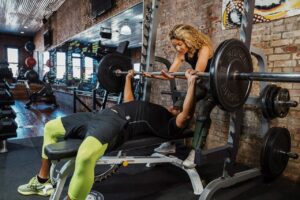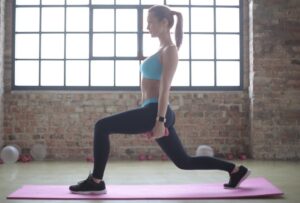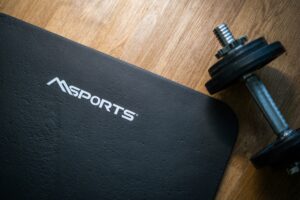The rectus abdominis, better known as the abs, is a thin muscle that runs from just below the ribcage to the pelvis. Its primary functions are to crunch the torso (bringing the ribcage and pelvis closer) and to provide stability.
The abs make up the core along with the transverse abdominis, obliques, erector spinae, glutes, and other muscles.
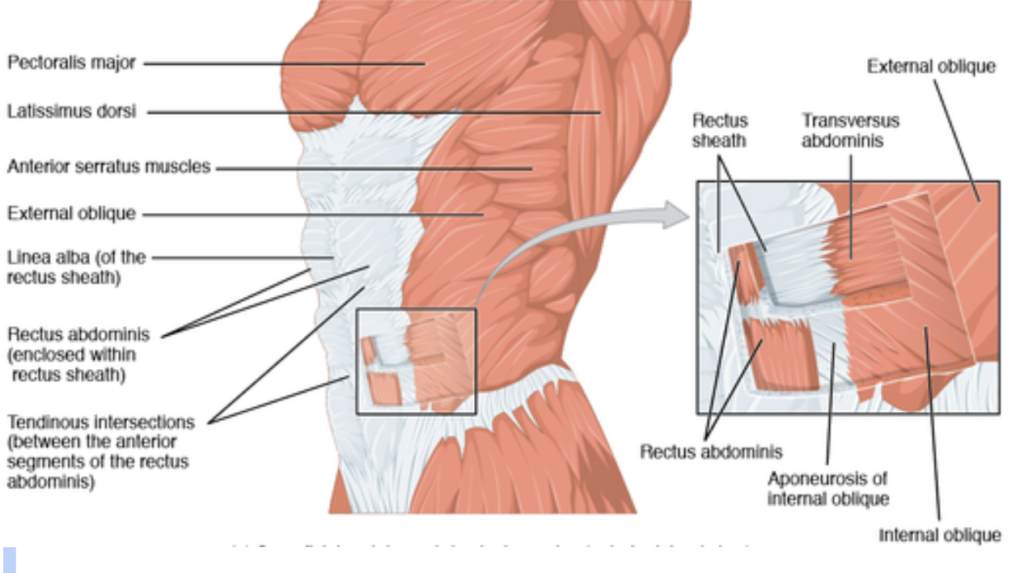
As with most other major muscles in the body, you can do a combination of compound and isolation exercises to develop the abs.
Let’s review.
Compound and Isolation Exercises
Compound exercises target two or more muscle groups and involve at least two joints. Good examples include:
For example, the squat is a compound exercise because it trains multiple muscle groups (quadriceps, glutes, back, etc.) and involves three joints: the ankles, knees, and hips (1).
In the case of squats, the quadriceps are the primary muscle groups at work, but secondary muscles include the hamstrings, glutes, midsection, back, etc.
Isolation exercises train a single muscle group and involve one joint. Examples include:
- Bicep curls
- Tricep extensions
- Leg curls
For example, the tricep extension is an isolation movement because it only targets the tricep muscle and involves the elbow joint.
Doing isolation exercises helps direct your attention to one muscle, leading to better mind-muscle connection and more growth.
When to Do Compound or Isolation Exercises
Knowing when to do compound and isolation exercises is crucial for putting together training programs and getting the most out of each session.
Luckily, making that decision isn’t as complicated, so long as you follow the hierarchy of exercise selection.
- Prioritize compound exercises.
- Proceed with assistance movements.
- Finish your sessions with isolation activities.
As you’ll see in the following point, there aren’t many ab-specific compound exercises. Instead, there are activities you can do to prioritize other areas and involve the abs and other midsection muscles.
Because of that, it can be challenging to determine when and how to train your abs effectively and how much direct work is enough.
Of course, that won’t stop us from trying to figure it out. To do that, we will look at the two common scenarios for training abs.
Find more exercises on the Hevy app.
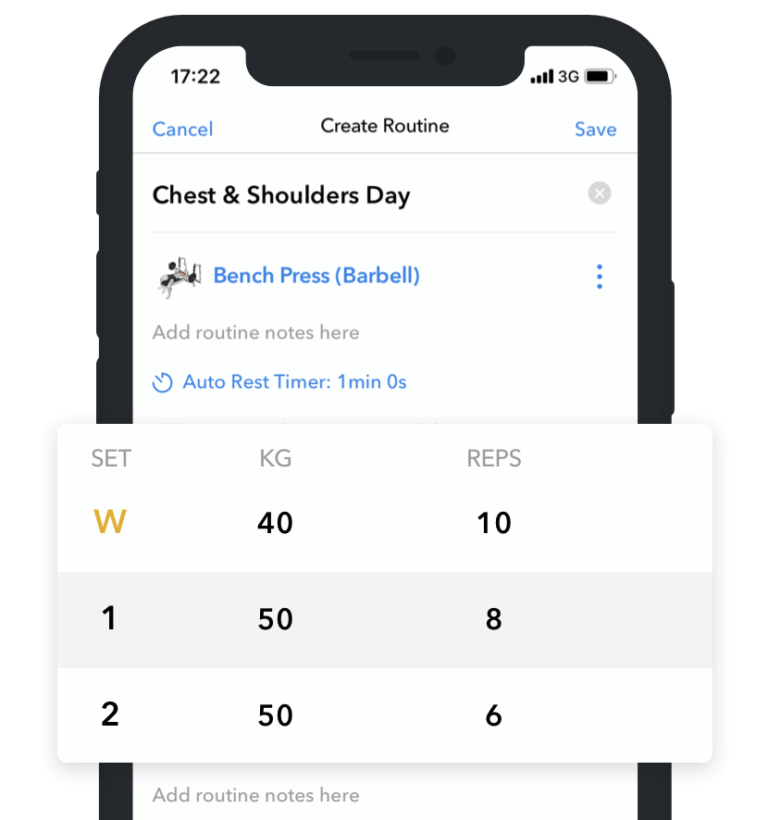
Hevy – Workout Tracker





Hevy – Workout Tracker
Create your ab exercises with Hevy, and track your progress
Scenario 1: As Part of a Workout for Other Muscle Groups
The first scenario can be confusing because it might not always be clear how to sequence your exercises.
Let’s take a back and biceps workout where you’d like to include some ab-specific work. The workout looks like this:
- Deadlift – 3 sets
- T-bar row – 3 sets
- Lat pulldown – 3 sets
- Seated cable row – 3 sets
- Standing dumbbell hammer curl – 3 sets
- Concentration curls – 3 sets
In that case, you have two options for adding ab exercises: before or after your bicep work.
Adding a couple of ab movements after training back but before working your biceps is viable because a tired midsection won’t impair your curl performance. Plus, giving your biceps a few minutes of rest after training back can help you perform slightly better and possibly promote more growth.
Alternatively, keep your workout the same and add some ab isolation work at the end. It is still an excellent way to structure your workout because you will finish your main work and stimulate your abs with the deadlift and T-bar row.
Plus, you follow the hierarchy mentioned above:
- Prioritize compound exercises. (Deadlift, T-bar row)
- Proceed with assistance movements. (Lat pulldown, seated cable row)
- Finish your sessions with isolation activities. (curls, ab isolation movements)
In such a scenario, you don’t want to include your ab-specific work early in a session because getting your midsection too tired can impact your performance on more important exercises.
For example, if you start your session with ab work, your performance on the deadlift and T-bar row might suffer. The effect is further magnified on compound exercises that rely even more on the abs: overhead press, push-press, front squat, etc. (2).
Scenario 2: In the Form of an Ab Workout
Picking what exercises to do in this scenario is more straightforward because it mostly comes down to prioritizing movements based on difficulty.
Doing the most challenging exercises first would allow you to perform better and do more quality repetitions. As your midsection muscles get tired, you can gradually reduce the difficulty by moving to easier exercises.
Let’s take three common ab exercises: lying crunch, cable crunch, and hanging leg raise. One way to organize these exercises into a routine would be like so:
- Hanging leg raises
- Cable crunch
- Lying crunch
The first two will be the most challenging and provide the most significant stimulus, whereas the lying crunch will serve as a ‘finisher’ for you to get more quality sets in and promote more growth and strength gain.
List of 7 Compound Exercises for Abs
As discussed in earlier points, there aren’t many compound ab exercises, but there are big movements that heavily depend on the abs. Here are some examples of compound exercises that strengthen the midsection:
1. Hanging Knee and Leg Raises
The hanging knee and leg raises are variations of the same compound movement for the rectus abdominis.
We consider the hanging leg and knee raises two of the best compound exercises for the abs because several muscle groups engage to keep you in position—namely, your forearms, upper arms, shoulders, and back.
You must hang from a pull-up bar and raise your legs repeatedly. Performing the exercise with straight legs is more challenging, whereas bending your knees as you lift your legs reduces the tension on your abs.
2. Plank
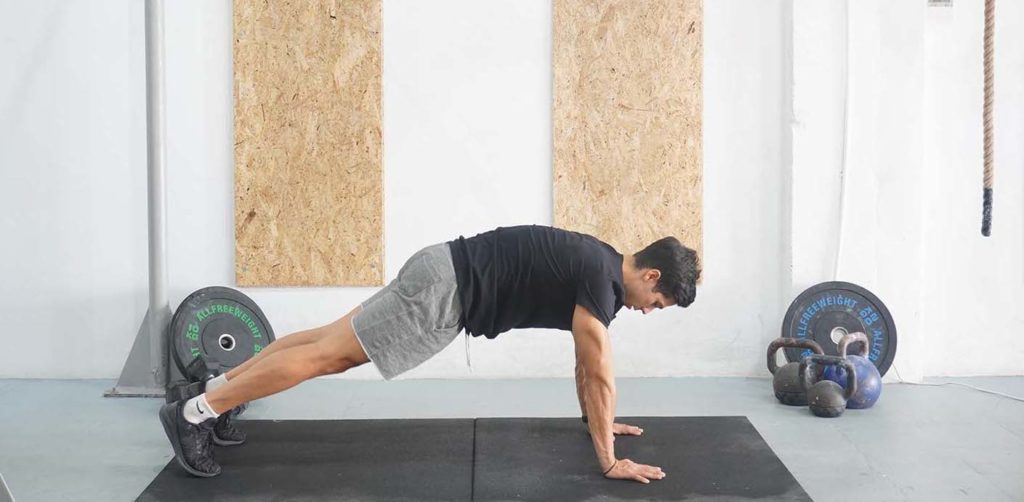

The plank is another compound exercise that trains the abs, glutes, quadriceps, back, shoulders, chest, and arms (2).
Unlike most other exercises, planks are an isometric activity where the objective is to assume a challenging position and hold it for a time. Numerous plank variations exist, including the beginner-friendly knee plank and the more advanced starfish plank, reverse plank, and spiderman plank.
Doing the traditional plank requires planting your forearms on the floor, supporting your lower body on your toes, and keeping your body straight.
3. Wall Sit
Like the plank, wall sits are a compound isometric exercise where you must assume a position and hold it for a period.
The objective is to place your back against a wall, bend your knees at a 90-degree angle, and hold.
Wall sits primarily train the abs, quadriceps, and glutes. You can make the activity more challenging by placing a weight plate on your thighs while holding the position.
4. Ab Wheel Rollouts
Ab rollouts are another challenging compound exercise for the midsection, arms, shoulders, chest, back, and lower body.
The objective is to take an ab wheel (two handles connected to a wheel) and roll back and forth while supporting yourself on your knees or toes.
Supporting yourself on your knees makes the movement easier, whereas being on your toes makes the activity much more challenging.
5. Knee Raise Parallel Bars
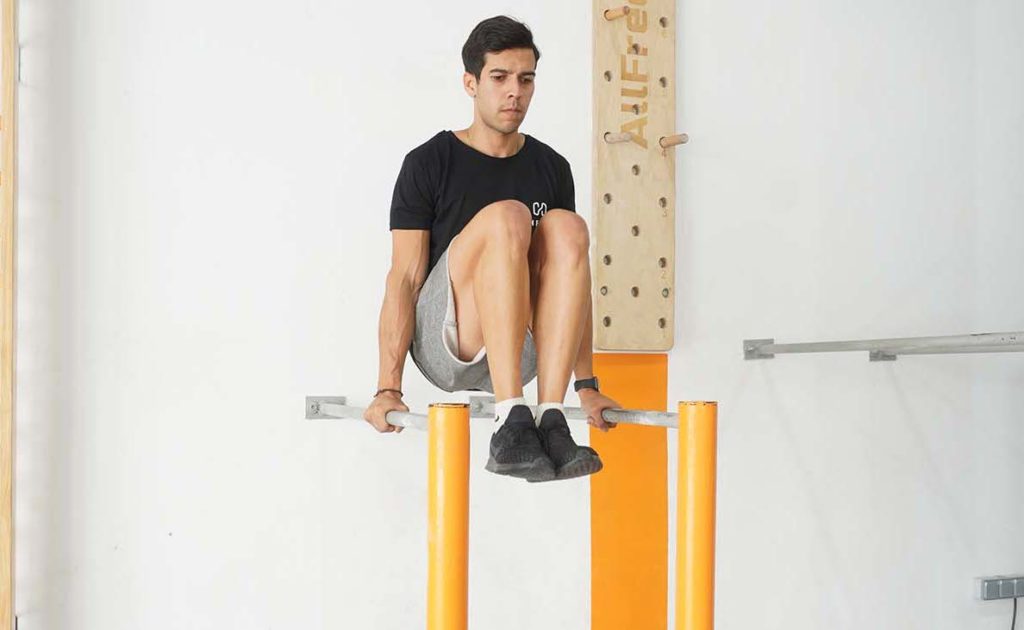

Knee raises on parallel bars are similar to the hanging knee raise in some ways. In both cases, several upper body muscles keep you in position while your abs and other midsection muscles produce force to lift your legs to your torso.
The objective is to grab a pair of parallel bars, suspend yourself in the air, and repeatedly raise your knees to your chest.
6. Farmer’s Walk
Farmer’s walk is the first compound exercise on our list that isn’t explicitly designed to develop the abs. Instead, the movement builds whole-body strength, stability, and muscle mass.
The objective is simple: grab a pair of weights (dumbbells, kettlebells, etc.) and walk as long as possible while keeping an upright posture. Doing so will build isometric strength in your abs, back, arms, shoulders, and lower body.
Your abs are heavily involved in the farmer’s walk because they must contract to provide torso stability and contribute to an upright posture.
7. Front Squat
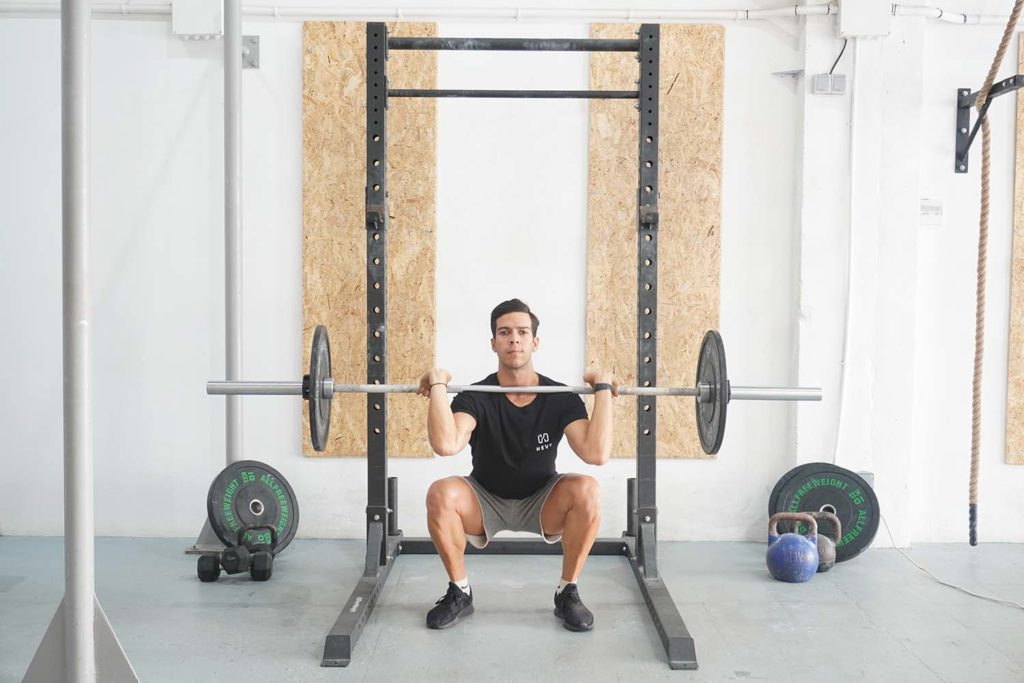

Front squats are a full-body compound exercise that primarily works the quadriceps. The objective is to place a barbell in a front rack position (resting the weight on your shoulders and supporting it with your fingertips) and squat.
The front rack position forces you to maintain a more upright torso because the barbell would otherwise fall forward. Doing so requires tremendous ab and back involvement to provide upper-body stability (2).
Goblet squats are a slightly easier variation if you don’t have the strength or mobility for front squats yet.





Hevy – Workout Tracker





Hevy – Workout Tracker
Create your ab exercises with Hevy, and track your progress
List of 7 Isolation Abs Exercises
1. Lying Knee and Leg Raises
Lying knee and leg raises are simple and equipment-free isolation movements for the abs.
Unlike the hanging knee and leg raise, these two are isolation exercises because no other muscles have to work for you to maintain your position.
The objective is to lie on the floor, lift your feet off the floor, and repeatedly raise them toward your upper body. Like hanging leg raises, keeping your knees straight makes the exercise more challenging.
2. Crunch
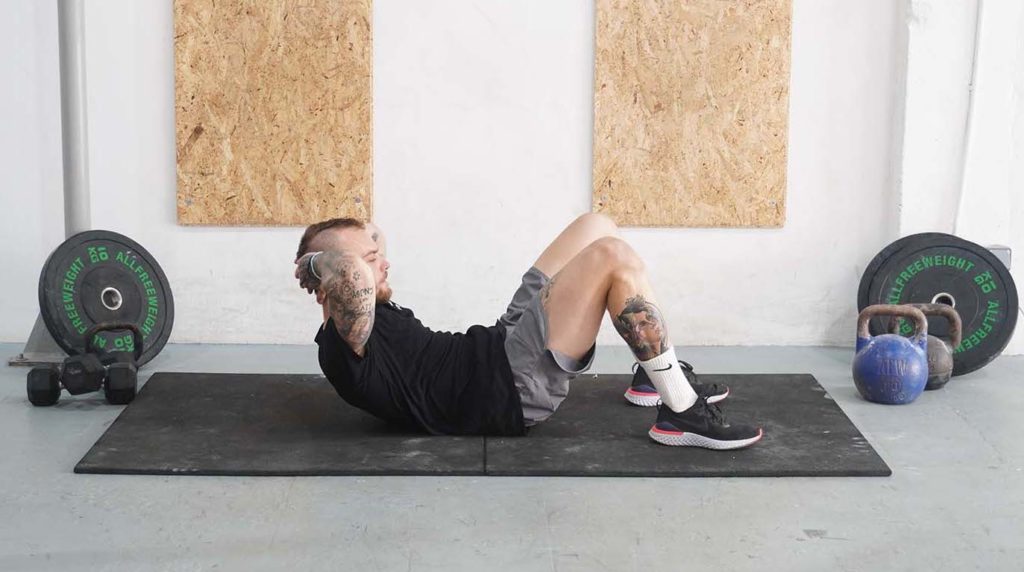

Crunches are another simple and effective isolation movement that trains the rectus abdominis.
The objective is to lie on the floor, bend your knees, plant your feet on the floor, and repeatedly raise your shoulder blades a few inches off the floor by crunching your abs.
You can make the crunch more challenging by performing it on a decline bench or by supporting a weight (e.g., weight plate) over your chest.
Related article: 14 Effective Exercises for Your Upper Abs Workout
3. Sit-Up
Sit-ups are similar to crunches, and most people use the two terms interchangeably.
The primary difference between the two is that sit-ups require you to lift your torso to an upright position instead of just raising your upper back off the floor (3).
A problem with sit-ups is that many people struggle to activate their abs and often train their hip flexors instead of the rectus abdominis.
Performing the exercise correctly requires crunching your torso by engaging your abs, forcing your upper body to move up.
Related article: Killer Lower Ab Workout to Achieve a Shredded Core
4. Cable Crunch
Cable crunches are an isolation exercise that offers the benefits of a compound movement.
Unlike other isolation exercises, cable crunches allow you to gradually increase the resistance by using more weight as your abs get stronger.
The objective is to grab a rope on a cable machine, get down on your knees, and crunch your torso against the resistance.
5. Russian Twist
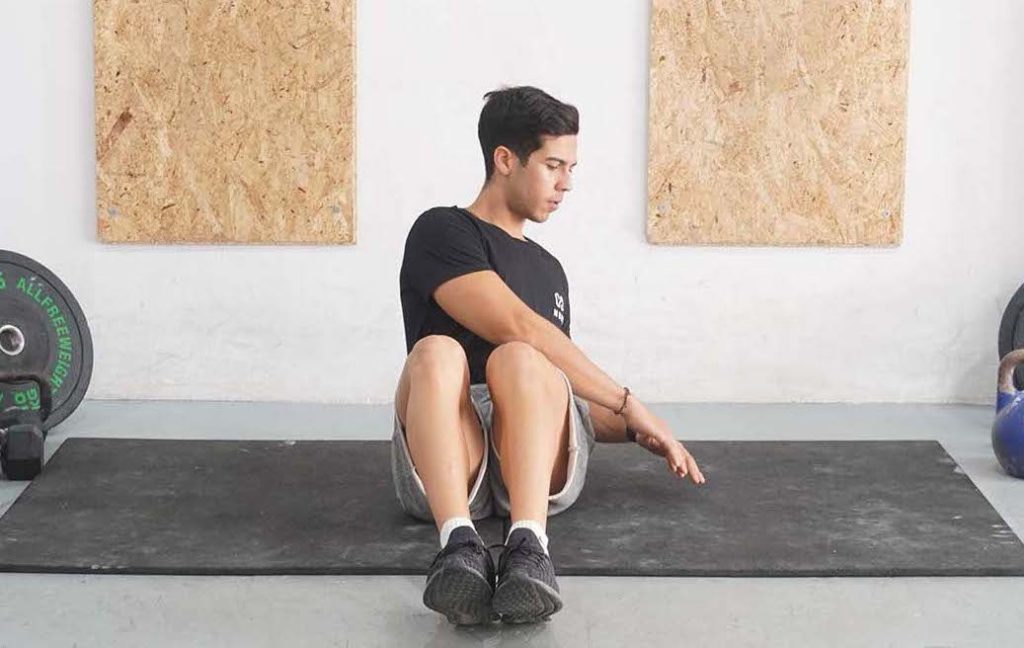

Russian twists are an isolation movement that primarily works the abs and obliques (the muscles on both sides of the abs).
The objective is to sit on the ground, lean your torso, and twist from side to side. Your abs contract to keep you in position, whereas your obliques produce the force for torso rotation.
You can make the Russian twist more challenging by holding a weight plate in front of your torso.
6. Flutter Kicks
Flutter kicks are a more dynamic exercise that isolates the rectus abdominis.
You must lie on the floor, straighten your legs, lift your feet off the floor, and move your legs up and down alternatingly.
Using ankle weights can make the exercise more challenging.
7. V Up
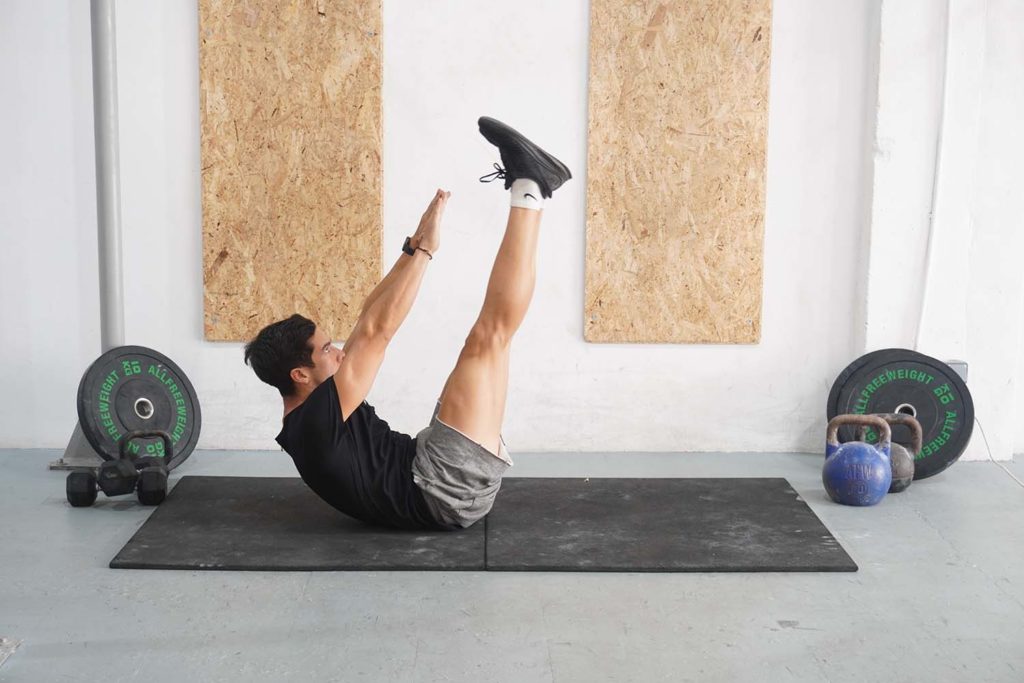

V-ups are one of the most challenging isolation exercises for the rectus abdominis.
Unlike a traditional sit-up, where you only raise your torso, the objective with the V-up is to simultaneously lift your legs and torso, creating a V shape when seen from the side.
Doing repetitions more slowly is an effective way to make the exercise more challenging. Ankle and wrist weights are another viable option for creating overload.
Final Words
Exercises like crunches and sit-ups are a great way to target your abs and finish them off after a challenging workout.
But movements like the hanging leg raise and ab wheel rollout are necessary to provide a good muscle overload and promote core strength.
In addition, including compound exercises that heavily rely on the abs (e.g., front squat, standing overhead press, etc.) will further promote ab strength and growth.
Other articles from the series:
- 10 Compound and 4 Isolation Back Exercises for an Impressive V-Taper
- 8 Isolation and 7 Compound Bicep Exercises For Big Arms
- 8 Compound and 6 Isolation Chest Exercises for Strong Pecs
- 5 Isolation and 9 Glute Compound Exercises for a Head-Turning Behind
- 7 Isolation and 8 Compound Leg Exercises for a Strong Lower Body
- 8 Isolation and 9 Compound Shoulder Exercises
- 7 Isolation and 7 Compound Tricep Exercises For Big Arms


